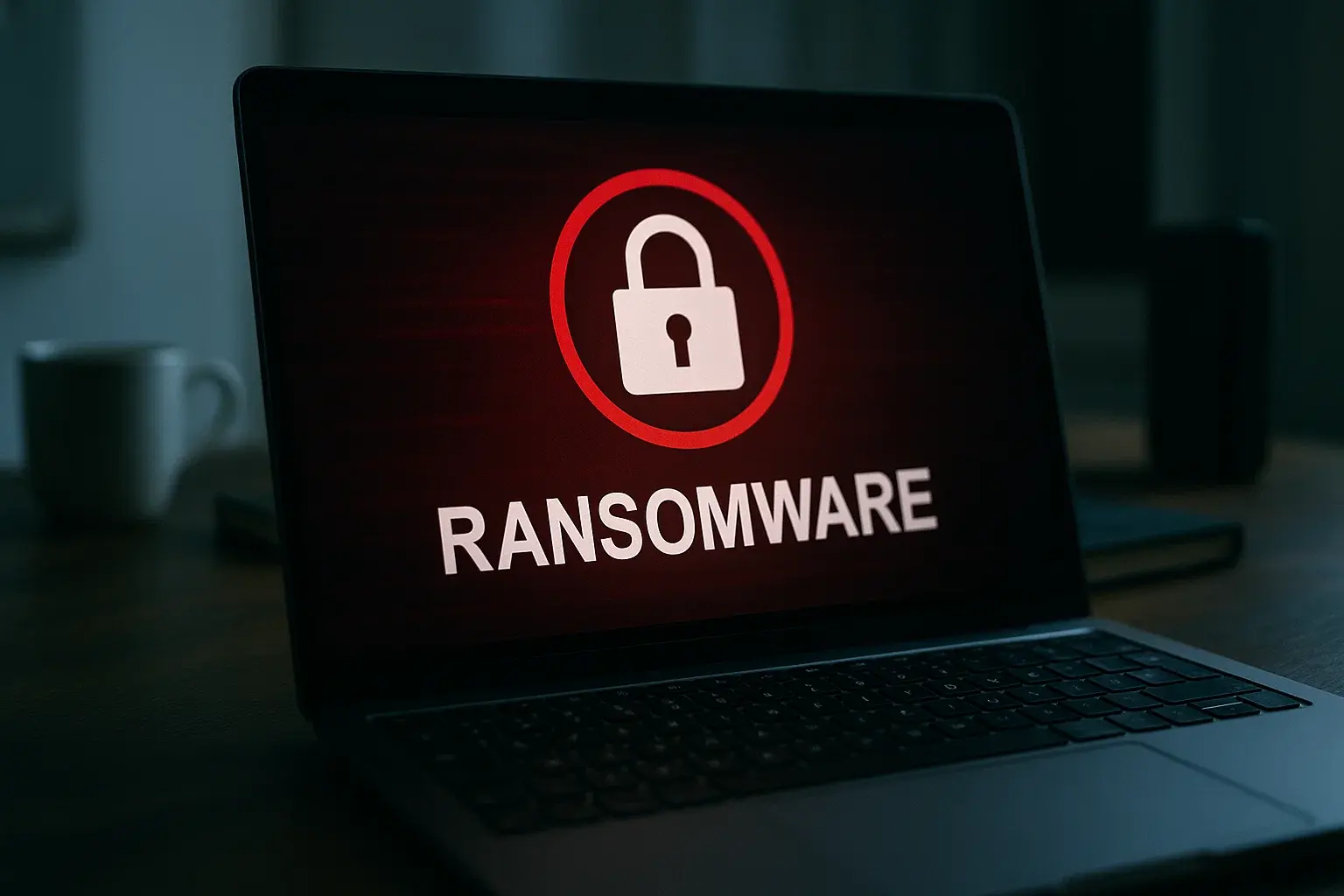Ransomware is no longer a standalone threat. In 2025, it has solidified its place as one of the most profitable and damaging forms of cybercrime for companies of all sizes. Whether you run a small business, a tech startup, or a large corporation, the question is no longer if you’ll be targeted—but when, and whether you'll be ready for it.
At TecnetOne, we’ve put together a comprehensive analysis of the latest ransomware figures, how its impact on businesses has evolved, which industries are being hit the hardest, and what prevention and response tools you should consider.
A Problem That Keeps Growing
To understand the scale of the threat, consider this real example from 2025: a small logistics company in Ohio lost access to all its data overnight. Trucks were grounded, customers left unattended, and all operational files were encrypted. The ransom demand? $210,000 in Bitcoin. The company paid—but the decryptor didn’t work. In the end, they had to reinvest in IT systems, legal support, and crisis management.
This case illustrates a tough truth: paying the ransom doesn’t guarantee you’ll get your data back—and criminals don’t always keep their word.
Learn more: Operating Systems Preferred by Hackers: Beyond Windows
Key Ransomware Figures in 2025
Recent global reports reveal alarming trends:
- 68% of victims suffer a second attack within six months.
- Average ransom demand has risen to $1.52 million.
- 41% of successful attacks exploited zero-day vulnerabilities—twice as many as two years ago.
- 47% of ransomware payloads are delivered via compromised third-party software, especially managed service providers (MSPs).
- Healthcare leads with 26% of attacks in Q1 2025.
- Monero (XMR) has overtaken Bitcoin as the top cryptocurrency for ransom payments, accounting for 33% of all transactions.
- The average downtime after an attack is 24.6 days—almost a month of operational disruption.
Most Targeted Sectors
Cybercriminals show clear attack patterns by industry:
- Professional Services (consulting, law firms, marketing agencies): 20.4%
- Consumer Services (e-commerce, tourism, entertainment): 12.8%
- Public Sector (local governments, universities): 10.2%
- Materials & Manufacturing: 9.7%
- Healthcare: 7.7% (with critical impact)
- Financial Services: 6.6%, Tech Sector: 10.7% (combined)
If your business relies on operational continuity or handles sensitive data, your risk is significantly higher.

Most targeted industries by ransomware attacks (Source: Comparitech)
Ransomware in SMBs vs Large Enterprises
Ransomware doesn’t discriminate by company size, but its effects vary:
- 78% of ransomware victims in 2025 are small and medium-sized businesses (SMBs).
- Large enterprises suffer 74% higher downtime costs.
- Average ransom demand:
$486,000 for SMBs
$2.9 million+ for large companies
- 40% of affected SMBs lay off staff within three months of the incident.
Ransomware isn’t just an IT issue—it’s a strategic and financial risk.

Ransomware protection global market report 2025 (Source: The Bussiness Research Company)
How Do Attackers Get In?
Most common ransomware entry points in 2025:
- Phishing: 42% of attacks—one bad click is enough.
- Unsecured remote access (RDP, exposed VPNs): 28%
- Software supply chain exploitation: 16%
- Cloud misconfigurations: 7%
- Leaked credentials on the dark web: 23%
- Emerging techniques: Deepfakes (2%) and QR phishing (1.6%)

Top 10 ransomware groups by leak site activity (Source: Infosecurity Magazine)
Ransomware-as-a-Service (RaaS)
Today, 72% of ransomware attacks come from affiliates using RaaS platforms:
- Monthly subscriptions in underground forums range from $250–$1,200.
- Affiliates earn $21,000 on average per infection.
- Many kits include evasion modules and even “customer support” for victims.
Ransomware is no longer a DIY crime—it’s a global business model.
The Role of Cryptocurrencies
Crypto trends directly affect ransomware operations:
- Monero (XMR) is now the top choice due to its anonymity.
- Bitcoin remains, but is more traceable.
- Tether (USDT) is rising in Asia and Eastern Europe.
- Most payments go through mixers and decentralized exchanges, making funds harder to track.
Still, authorities are catching up—36% of payments are traced within 48 hours.
Similar titles: Dark Web Profile of the SafePay Ransomware
Recovery Costs and Timelines
The average recovery from a ransomware attack in 2025 involves:
- 24.6 days of downtime
- $356,000 daily losses for mid-sized companies
- $1.68 million total cost, including legal, IT, and operational expenses
- Even when paying the ransom, 37% of companies lose some data
Companies with immutable backups reduced downtime by 90%, proving that good practices pay off.

Ransomware impacted companies by size (Source: Veeam)
Government and Law Enforcement Response
Global authorities are ramping up efforts:
- 22 countries have criminalized ransom payments to sanctioned actors.
- The FBI logged 161,000 ransomware-related complaints in the first half of 2025.
- Europol and Interpol dismantled several major ransomware rings.
- More nations now require reporting attacks within 48 hours.
Ransomware has moved beyond business—it's now a matter of national security.

Ransomware infection rates by region (Source: Kaspersky)
How to Protect Your Business
While ransomware is on the rise, so are defenses. Here’s how to strengthen your security:
- Adopt a Zero Trust approach: Always verify identity and context.
- Use AI-powered EDR tools to detect suspicious behavior in real time.
- Strengthen email security—still the #1 attack vector.
- Make frequent, immutable backups—recovery is impossible without them.
- Train your team—social engineering remains the easiest way in.
- Have a solid incident response plan covering containment, recovery, and communication.

Ransomware group activity analysis (Source: SOCRadar)
Conclusion
Ransomware in 2025 has evolved into a professional, global business with direct impacts on company survival. Attackers now leverage AI, the cloud, and cryptocurrency to scale faster and strike harder—but defenders have better tools too.
At TecnetOne, we help companies design robust cybersecurity strategies and offer rapid-response incident services to make sure your business isn’t left exposed.
Because the real question isn’t if you’ll be attacked—it’s when.


